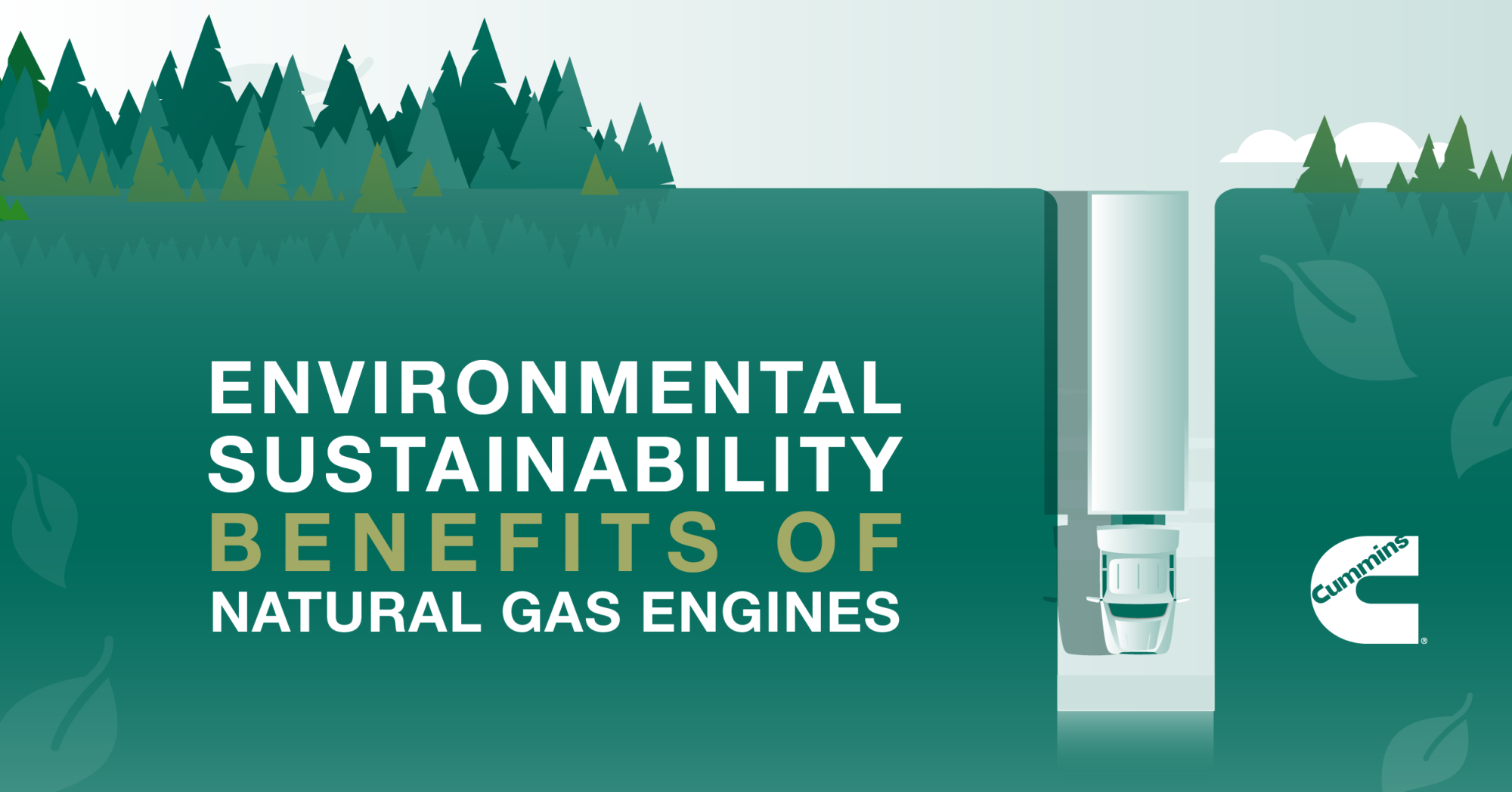Environmental sustainability benefits of natural gas engines
By Puneet Singh Jhawar, General Manager – Global Spark Ignited Business

It can be difficult to grasp the role natural gas engines play when it comes to reducing transportation emissions and making the trucking industry more sustainable. Natural gas is a fossil fuel, just like diesel and gasoline, so there are some misconceptions about the environmental benefits it can provide, particularly when compared to emerging alternative powertrain options like hydrogen fuel cell or battery electric vehicles (BEV). Both fuel cell and BEV vehicles are often referred to as “zero emission” options. While it’s true they don’t produce any tail pipe emissions, that only tells part of the sustainability story.

What makes natural gas an environmentally friendly fuel?
Like diesel engines, natural gas engines are internal combustion engines. They all release some level of greenhouse gas (GHG) emissions, but for the same number of miles driven, a natural gas vehicle usually results in a lower overall amount of GHGs and particulate matter like carbon dioxide (CO2) and nitrogen oxides (NOx), while delivering similar power and performance.
One way to compare the overall greenhouse gas and carbon intensity of fuels such as natural gas, renewable natural gas, and diesel, and vehicles is to look at a metric called well-to-wheel emissions. Well-to-wheel emissions include the total GHG emissions generated from the use of the fuel and the production and transportation or generation of the fuel.
Natural gas engines lower GHG emissions
When looking at the total well-to-wheel impact of compressed natural gas (CNG) and diesel, CNG delivers GHG reductions somewhere in the range of 13% – 17%. The CO2 numbers are even better, with an average reduction of 25% or more.
Cummins’ GHG Emissions Calculator provides an analysis of the well-to-wheels emissions of medium and heavy-duty vehicles based on the typical fuels available in North America. The GHG Emissions Calculator is based on detailed lifecycle models developed by researchers at the Argonne National Laboratory. In most medium and heavy-duty applications, a natural gas engine can result in well-to-wheel greenhouse gas emissions lower than an equivalent diesel engine. For example, a transit bus equipped with Cummins’ L9N natural gas engine can result in about 6% less greenhouse gas emissions than the same truck equipped with a diesel engine. If the natural gas bus replaces an older diesel bus, greenhouse emissions reductions can be even greater—13% or more.
Environmental sustainability and renewable natural gas
The sustainability impact of natural gas really shines when you factor in renewable natural gas (RNG). Renewable natural gas is manufactured primarily using methane that comes from the decomposition of organic waste. This can include landfill gas or methane captured from wastewater treatment facilities or agricultural waste.
Using RNG brings the total carbon intensity score down, because RNG is made with methane that would have otherwise been off gassed. Capturing those gases prevents them from entering the atmosphere and reduces the total well-to-wheel score significantly. It can even drop the carbon intensity to below zero depending on the RNG feedstock. Renewable natural gas is functionally identical to natural gas obtained from fossil resources. Blending fossil natural gas with even small quantities of RNG can result in immediate environmental benefits. And every year RNG becomes a bigger percentage of all CNG being used in North America, contributing towards the role natural gas to play in our renewable future.
Reducing criteria air emissions with natural gas engines
Reduced greenhouse gas emissions are only part of the equation. Natural gas vehicles also help to reduce air pollution. More accurately, natural gas vehicles cause less air pollution without the need for complicated aftertreatment systems designed to scrub pollutants from a vehicle’s exhaust. Natural gas engines are certified at near zero low NOx levels (0.02g/bhp-hr) and release minimal amounts of harmful volatile organic compounds (VOCs) like benzene. When a large fleet replaces older diesel vehicles with natural gas engines, these benefits can have an immediate positive local impact on air quality. This is one of the reasons why natural gas vehicles are especially popular in urban areas, and why transit buses and refuse trucks are among the most common examples of natural gas engines on trucks and buses.
No environmentally harmful spills
From an environmental standpoint, compressed natural gas has one additional advantage over petroleum fuels. Unlike oil and oil distillates such as diesel and gasoline, natural gas is, well, a gas. This means that if a leak occurs, any natural gas that escapes will almost instantly dissipate in the atmosphere. Leaking natural gas into the air is not without environmental impact. But it is always preferable to spilling liquid hydrocarbons, which can lead to ground and water contamination. Countless gas stations all over the world, leaky underground gasoline tanks at countless gas stations have caused significant soil contamination. With natural gas, this is not a problem.
Natural gas, in summary, may not be the only solution to man-made pollution in the transportation sector, but it has a role to play when it comes to reducing emissions now without major disrupts to current business models. In fact, Walmart recently announced it will provide heavy-duty trucks for Cummins to integrate with the new 15-liter natural gas engine, the X15N™, which runs on compressed natural gas (CNG). After taking delivery, Walmart will field-test the finished trucks at its distribution center in Fontana, California, with Chevron supplying the trucks with CNG linked to renewable natural gas.
Additionally, there are other benefits of natural gas engines in transportation, particularly when it comes to financial benefits of natural gas engines.
Never miss the latest and stay ahead. Sign-up below to receive the latest in technologies, products, industry news, and more.

Author Profiles

Puneet Singh Jhawar, General Manager – Global Spark Ignited Business
Puneet Singh Jhawar is the General Manager of the global natural gas business for Cummins Inc. In this role, he is responsible for the product vision, financial management and overall performance of the natural gas business. Over his 14-year career at Cummins, Jhawar has cultivated successful relationships with a number of Cummins’ largest customers. Jhawar has extensive global experience, with roles based in the Middle East, India, Europe and the US.
Related Tags